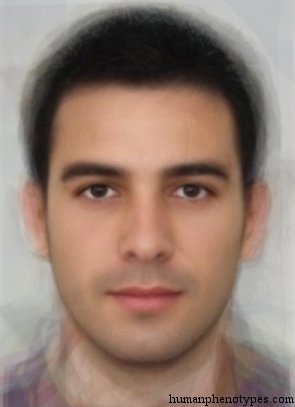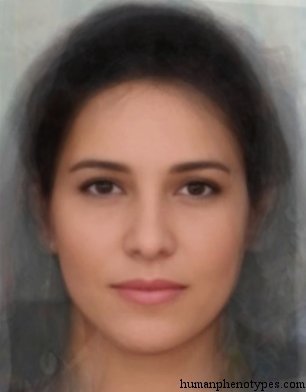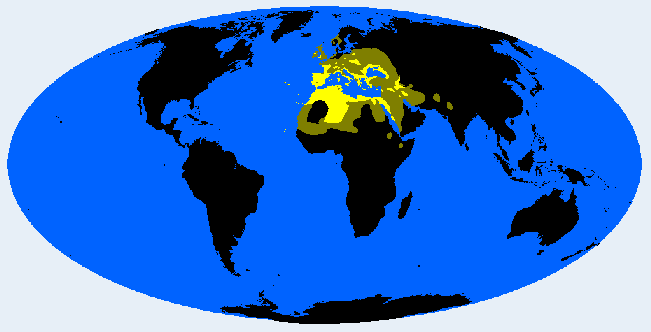Description:
Widespread group, common all over the Mediterranean and adjacent regions. Long-headed, dark-eyed, with light brown skin, and straight to curly, often dark and abundant hair. Occiput protruding, chin small and well-modeled, mouth small, slightly softer and fuller than in Nordid, skulls often smaller. The tall Atlanto Mediterranid subgroup is typified by the narrow-faced Eurafricanids, but many include broader-faced, more ancient, cromagniform Berberids and the eastern Pontids, who seem connected to ancient Indo-Europeans of the Eurasian steppes (e.g. Kurgans around 5000 BCE). The small Gracile Mediterranid subgroup is usually regarded as the most typical Mediterranid. The short-nosed, wide-faced, and short Paleo Sardinians represent an older variety. Trans Mediterranids show intermediate features between Gracile and Atlanto Mediterranid. Mediterranoids in a broader sense include Orientalids and Indids. European colonists spread them all over America.Names:
Mediterranid (Eickstedt, 1952; Vogel, 1974; Knussmann, 1996), Mediterranean (Hooton, 1946; Coon et al., 1950; Cole, 1965; Debets, 1974; Alexeev, 1979), Indo-Atlantique (Deniker, 1889), Méditerranéenne (Vallois, 1968), Mediterranea (Biasutti, 1967), Homo sapiens pelagius (Fischer, 1829).






